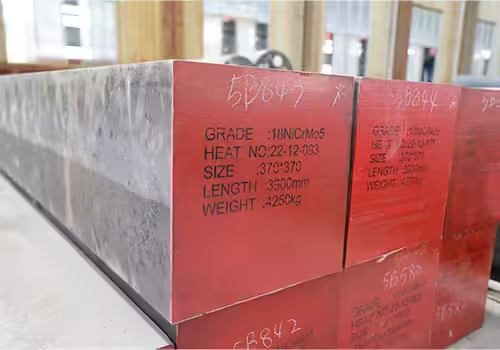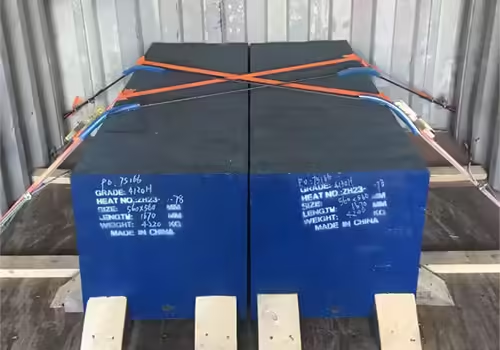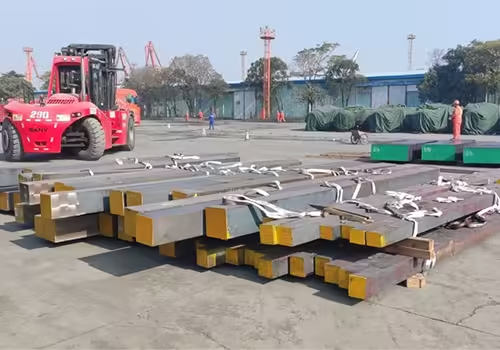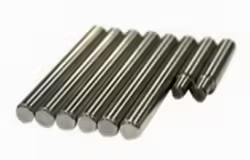
Is AISI 1020 Steel Equivalent Ideal? 3 Picks
Table of Contents
Introduction

When it comes to choosing the right type of steel for your project, understanding the properties and possible alternatives is crucial. One popular choice among manufacturers and engineers is AISI 1020 steel. It is known for its excellent weldability, low carbon content, and good balance of strength and ductility. However, depending on your specific application, there might be better options. Exploring the aisi 1020 steel equivalent options can open doors to materials that are more suitable for specialized needs. This article delves deep into whether AISI 1020 steel is truly the best option and highlights three top alternatives you should consider.
What Is AISI 1020 Steel?
Before diving into the various alternatives, it is crucial to first understand what makes AISI 1020 steel such a widely utilized material in industries around the globe. AISI 1020 steel is classified as a low-carbon steel, featuring a carbon content that typically ranges from 0.18% to 0.23%, and a manganese content between 0.30% and 0.60%. This specific composition gives the steel a combination of excellent weldability and good overall workability, making it a reliable choice for many applications.
The standout characteristics of AISI 1020 steel include:
- Excellent weldability, allowing it to be easily joined without the need for complex procedures
- Good machinability, making it suitable for cutting, drilling, and milling operations
- Moderate tensile strength, providing enough durability for a wide range of structural applications
- High ductility, offering flexibility and resistance to cracking during deformation
Thanks to these features, AISI 1020 steel finds widespread use in manufacturing automotive parts, machinery components, and even construction frameworks. Its versatility and availability have cemented its place as a go-to material for engineers and fabricators. However, while AISI 1020 steel meets the needs of many applications, there are scenarios where opting for an aisi 1020 steel equivalent could lead to improved performance, better cost efficiency, or compliance with specific standards.
Understanding these equivalents can help businesses and engineers select a material that better matches the specialized demands of their projects. its versatility. Despite these advantages, in certain applications, seeking an aisi 1020 steel equivalent might offer better performance.
3 Powerful AISI 1020 Steel Equivalents You Should Know
When evaluating alternatives to AISI 1020, it’s important to focus on steels that offer similar or enhanced mechanical properties, cost advantages, or easier sourcing depending on your regional market. Here are three noteworthy options that are often considered reliable aisi 1020 steel equivalents:
1. SAE 1020 Steel
SAE 1020 steel is one of the closest equivalents to AISI 1020. Sharing nearly identical chemical composition and mechanical properties, it is regarded as a direct substitute in most industries. Like AISI 1020, SAE 1020 boasts excellent weldability and machinability, making it particularly useful for parts that require welding, cutting, or shaping.
Common applications for SAE 1020 include automotive components like axles and crankshafts, as well as machinery parts and general structural purposes. Its widespread acceptance in the North American market further simplifies sourcing and standard compliance, making it an easy replacement option for AISI 1020 users.
2. EN3B Steel (BS 970 070M20)
EN3B steel, also known by its British Standard designation BS 970 070M20, is a low-carbon mild steel with characteristics very close to those of AISI 1020. Its favorable properties include good weldability, excellent machinability, and moderate strength, making it highly suitable for general engineering applications.
One of the main advantages of EN3B steel is its cost-effectiveness. For projects where budget constraints are a concern but performance cannot be compromised, EN3B stands out as a strong contender. It is widely used in the manufacture of bolts, shafts, rods, and other general-purpose components. The broad availability of EN3B in European and Commonwealth countries further enhances its appeal as an aisi 1020 steel equivalent.
3. S20C Steel (JIS Standard)
S20C steel, standardized under the Japanese Industrial Standards (JIS), is another excellent option when searching for an aisi 1020 steel equivalent. Featuring a similar carbon content and mechanical performance, S20C is recognized for its reliability in producing medium-strength parts with good wear resistance.
Typical applications of S20C steel include the manufacturing of machine parts such as gears, shafts, and bolts. Its slightly different processing characteristics may offer advantages in particular manufacturing processes, especially where specific surface treatments or hardenability requirements are involved. In regions where JIS standards are prevalent, choosing S20C ensures compliance with local engineering and manufacturing expectations.
By understanding these three strong alternatives, industries can better tailor material selection to their specific needs, ensuring optimal performance, compliance, and cost efficiency in their projects.
Table: AISI 1020 Steel vs Equivalents
| Property | AISI 1020 | SAE 1020 | EN3B (070M20) | S20C |
|---|---|---|---|---|
| Carbon Content (%) | 0.18 – 0.23 | 0.18 – 0.23 | 0.17 – 0.23 | 0.17 – 0.23 |
| Manganese Content (%) | 0.30 – 0.60 | 0.30 – 0.60 | 0.30 – 0.60 | 0.30 – 0.60 |
| Tensile Strength (MPa) | 420 – 490 | 420 – 490 | 430 – 510 | 410 – 510 |
| Applications | Automotive, Machinery | Automotive, Machinery | General Engineering | Shafts, Machinery |
| Weldability | Excellent | Excellent | Excellent | Excellent |
Key Factors to Consider When Choosing an AISI 1020 Steel Equivalent

Choosing the right aisi 1020 steel equivalent depends on several important factors. These factors include:
Application Requirements
Determine the mechanical properties needed for your application. If you require higher strength, one of the equivalents might be more appropriate.
Availability
Depending on your region, some equivalents might be easier to source than others. Availability can significantly affect project timelines and costs.
Cost Efficiency
Always compare the cost of equivalents. Sometimes, a small compromise in properties can lead to significant cost savings.
Compliance and Standards
Ensure that the equivalent steel meets the necessary industry standards and certifications required for your application.
Advantages and Disadvantages of Using AISI 1020 Steel and Its Equivalents
Understanding the pros and cons of using AISI 1020 steel or its alternatives can guide you to the right decision.
Advantages
- Good balance of strength and ductility
- Excellent weldability
- Cost-effective for general-purpose applications
- Broad availability
Disadvantages
- Limited high-temperature performance
- Lower hardenability compared to alloy steels
- May require surface hardening for wear resistance
When seeking an aisi 1020 steel equivalent, these disadvantages might prompt you to select a material better suited to your operational needs.
Common Applications of AISI 1020 Steel and Its Equivalents
Both AISI 1020 and its equivalents are used across a wide range of industries. Some common applications include:
- Automotive components like axles, crankshafts, and camshafts
- Machine parts such as gears and shafts
- Agricultural equipment
- Construction frameworks
In many of these applications, an aisi 1020 steel equivalent can serve just as well, if not better, depending on the specific project demands.
How to Identify the Right AISI 1020 Steel Equivalent for Your Project

Selecting the right equivalent involves a systematic approach:
- Identify Project Requirements: Know what mechanical properties and certifications you need.
- Compare Material Specifications: Analyze the chemical and mechanical properties of potential substitutes.
- Consult Industry Standards: Ensure the alternative meets industry and regulatory standards.
- Assess Supplier Availability: Make sure the material is readily available from trusted suppliers.
- Consider Processing Requirements: Some materials might need additional treatments like heat treatment or surface hardening.
Taking a methodical approach will ensure you choose the best aisi 1020 steel equivalent for your needs.
Conclusion
AISI 1020 steel remains a trusted choice for a wide range of applications, thanks to its excellent weldability, good machinability, and cost-effectiveness. However, depending on your project’s specific requirements, looking into an aisi 1020 steel equivalent can lead you to even better results. Alternatives like SAE 1020, EN3B, and S20C offer very similar characteristics, with some slight differences that might better suit your needs. By thoroughly understanding your project requirements and comparing the properties of different materials, you can make a well-informed decision that enhances performance and efficiency.
FAQ
What is the closest aisi 1020 steel equivalent?
The closest equivalent to AISI 1020 is SAE 1020, as it shares almost identical chemical and mechanical properties.
Can I use EN3B steel instead of AISI 1020?
Yes, EN3B steel is a suitable aisi 1020 steel equivalent, especially for general engineering applications where moderate strength and good weldability are required.
Is S20C better than AISI 1020?
S20C offers comparable properties to AISI 1020. Whether it is “better” depends on the specific requirements of your application.
Where is AISI 1020 steel commonly used?
It is widely used in the automotive industry, machinery manufacturing, construction, and agricultural equipment.
How do I choose the right aisi 1020 steel equivalent?
Evaluate your application requirements, compare material properties, ensure compliance with industry standards, and consult with your material supplier to make the best choice.






